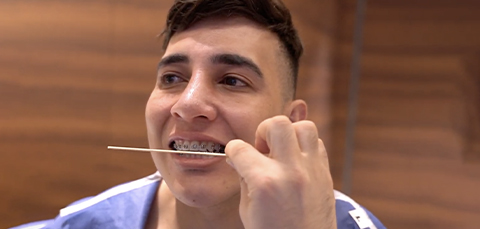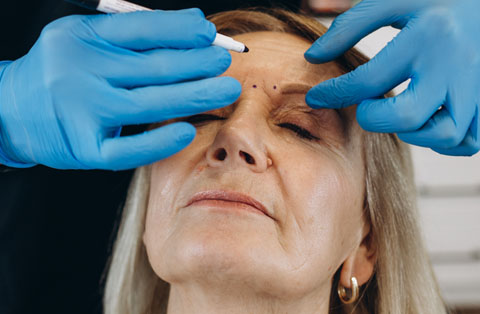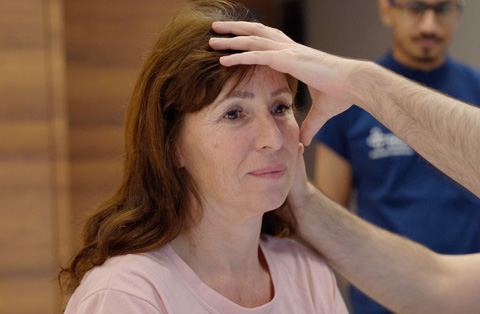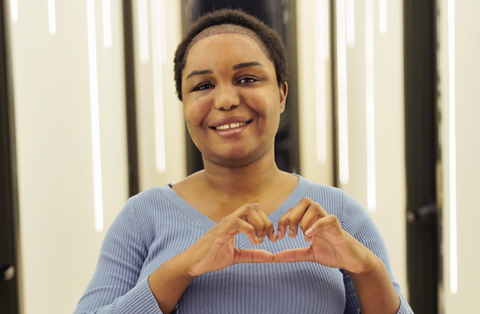Double Jaw Surgery offers a comprehensive solution for correcting jaw misalignments, significantly improving both functional and aesthetic aspects of the jaw and face.
In this article, we will discuss the features of double jaw surgery. We will explain in detail the purposes, reasons, benefits, risks, and expected recovery process of this corrective jaw surgery.
Understanding Corrective Jaw Surgeries
Orthognathic surgery, popularly known as jaw surgery, is a specialized medical procedure for jawline correction.
This surgery can target different parts of the jaw structure, including:
- The upper jaw (maxilla)
- The lower jaw (mandible)
- Both the upper and lower jaws (bimaxillary surgery)
If the surgery addresses both the upper and lower jaws, we call it double jaw surgery or bimaxillary osteotomy. It is also called bimax surgery or bimaxillary surgery among the public.
Orthognathic surgery has two main purposes:
- Improve jaw function
- Aesthetic appearance.
The surgical approach may involve repositioning either or both jaws. In some cases, bone segments may need to be removed to achieve the desired result.
Types of Orthognathic surgery
There are different types of jaw surgeries depending on patient needs. These include:
Le Fort I Osteotomy:
It is a type of oral surgery, focused on correcting irregularities of the upper jaw (maxilla). It is named after René Le Fort, a French surgeon who classified facial fractures.
Bilateral Sagittal Split Osteotomy (BSSO):
Bilateral Sagittal Split Osteotomy is a usual oral surgery in orthognathic surgery. Surgeons do it to fix lower jaw problems. In this surgery, they cut carefully on both sides of the lower jaw. This lets them move the jaw to a new place.
Genioplasty:
Genioplasty is designed to modify the chin’s shape and position for a more balanced facial appearance.
Bimaxillary Osteotomy:
It is a combination of Le Fort I Osteotomy and BSSO. Bimax Osteotomy alters both the upper and lower jaws for a comprehensive correction.
Maxillofacial Surgery Stats
Maxillofacial surgeries maintain their place in the top five among Reconstructive Procedures, according to the 2022 ASPS (The American Society of Plastic Surgeons) Procedural Statistics report. More than 50,000 Maxillofacial surgeries were performed in the USA in 2022.
The success rate of bimax surgery is approximately 95%, resulting in improved facial aesthetics and functional outcomes.
What Is Double Jaw Surgery?
Double jaw surgery or Bimaxillary surgery, is a surgical procedure that aims to correct misalignment or deformities of both the upper jaw and the lower jaw. It addresses issues related to the structure, position, and function of the jaws and facial bones.
Double Jaw Surgery Procedure
Bimaxillary surgery is a versatile surgical procedure. It aims to correct upper and lower jaw disorders.
Detailed breakdown of the process:
Consultation and Planning:
Before the surgery, a comprehensive consultation is held with the maxillofacial surgeon and orthodontist. Advanced imaging techniques such as 3D CT scans are used to evaluate jaw structure. In this way, a detailed surgical plan is created based on patient needs.
Pre-surgical Orthodontic Treatment:
Patients usually undergo orthodontic treatment before surgery. This step helps align the upper teeth and lower teeth in the correct position. It can range from a few months to a couple of years, depending on the individual’s needs.
Anesthesia:
The surgery is performed under general anesthesia.
Surgical Access: The surgeon makes an incision inside the mouth. That minimize visible external scars. This gives the surgeon access to the jaw bones.
Osteotomy:
The surgeon makes precise jaw bone cuts in the upper jaw (maxilla) and the lower jaw (mandible). This allows for the free movement and repositioning of these jaw segments.
Jaw Correction:
The surgeon moves the misaligned jaw segments into their pre-planned, new jaw positions. This step is crucial for addressing facial asymmetry and achieving the desired facial aesthetics.
Fixation:
Once the jaws are aligned, they are held in place using titanium plates and screws. These fixtures provide stability and aid in the healing process.
Additional Procedures:
Depending on the patient’s requirements and the surgeon’s guidance, additional procedures like genioplasty (chin reshaping) might be performed. In this way, overall facial harmony can be achieved.
Wound Closure:
The surgeon carefully stitches the incisions inside the mouth. They make sure the wound is properly closed.
Recovery Period:
After the surgery, patients are closely monitored in a recovery room. Once stable, they might be required to stay in the hospital for 2-4 days. During recovery, you need a soft diet. Take the medicines your doctor gives you. And go to regular check-ups to keep an eye on how you are healing.
Post-surgical Orthodontic Treatment:
After the surgery, you might need more dental treatments to adjust your teeth’s alignment and make sure your bite works well.
These steps give a basic idea of what happens in bimaxillary surgery. It’s important to remember that the details can change depending on your situation and the surgeon’s specific approach.
Benefits of Double Jaw Surgery
The jawline problem causes visible problems in facial asymmetry and facial aesthetics. Double jaw surgery eliminates facial asymmetry caused by jaw problems.
Bimax surgery has many benefits that can improve the patient’s quality of life. These include:
Correct Jaw Misalignment:
It resolves open bite problems like underbites, overbites, and crossbites. Also jawline correction improves your facial asymmetry.
Types of jaw misalignment:
- Deep overbite
- underbite
- open bite
- jaws that overlap sideways
- jaws that meet at the wrong angle (asymmetric jaws)
Correct Jaw Size:
The procedure adjusts the size of the jaws to achieve proportional facial appearance.
Balance Facial Features:
By aligning the jaws properly, the surgery creates a balanced and appealing facial profile.
Improve Jaw Function:
It rectifies chewing, swallowing, and speech issues caused by jaw malformation.
Relieve Facial Pain:
It provides relief from facial pain and discomfort associated with jaw disorders.
Improve Obstructive Sleep Apnea:
The surgery can make the breathing passages bigger, which helps with symptoms of sleep apnea.
Which Surgeon can perform Double Jaw Surgery?
Double jaw surgery is typically performed by an oral and maxillofacial surgeon. These surgeons specialize in surgery of the mouth, jaws, and face and have extensive training in these complex procedures. In some cases, a team involving both an oral and maxillofacial surgeon and a plastic surgeon may be involved, depending on the specific requirements and goals of the surgery.
Who are good candidates for a Bimaxillary Osteotomy?
Good candidates for a Bimax Osteotomy include people who have:
- Misaligned Jaws: People with significant mismatches between their upper and lower jaws.
- Bite Problems: People suffering from severe open bite problems like overbite, underbite, or crossbite that cannot be corrected with braces alone.
- Facial Asymmetry: People with noticeable facial imbalance due to the positioning of their jaws.
- Speech Difficulties: Those who experience speech issues as a result of jaw misalignment.
- Chewing and Eating Challenges: People facing difficulties in chewing or eating because of improper jaw alignment.
- Chronic Jaw Pain: People with pain or discomfort in the jaw joint (TMJ disorders) related to jaw positioning.
- Obstructive Sleep Apnea: Patients with sleep apnea caused by jaw structure issues.
- Aesthetic Concerns: Those who seek to improve their facial aesthetics due to jaw-related issues.
- Healthy Overall Condition: People in good general health, without conditions that increase surgical risks.
- Psychological Readiness: Patients who are mentally ready for the surgery and its recovery process.
What Can I Expect After Double Jaw Surgery? Recovery Timeline:
After Double Jaw Surgery, here’s a simple timeline of what you can expect:
Immediate Post-Surgery (First Week)
- First Few Days: Swelling and discomfort are common. You’ll stay in the hospital for monitoring.
- Pain Management: You’ll get pain medication to help with any discomfort.
- Liquid Diet: You’ll start with a liquid diet since chewing will be difficult.
Early Recovery (Week 2 to Week 4)
- Reduced Swelling: Swelling starts to go down.
- Soft Foods: You can move to soft foods like mashed potatoes or smoothies.
- Rest: Lots of rest is important to help your body heal.
Mid Recovery (Month 2 to Month 3)
- Follow-Up Visits: You’ll see your doctor for check-ups to see how you’re healing.
- Eating Improves: Eating gets easier, but still stick to soft foods.
- Less Discomfort: Pain and discomfort should be much less now.
Late Recovery (Month 4 to Month 6)
- Solid Foods: You can slowly start eating more solid foods.
- Normal Activities: You can get back to most of your normal activities.
- Visible Changes: You’ll start to see the final changes in your jaw shape.
Full Recovery (6 Months and Beyond)
- Full Healing: Your jaws are fully healed.
- Final Results: You’ll see the final results of the surgery.
- Regular Diet: You can eat normally again.
Remember, everyone’s recovery is different. Always follow your doctor’s advice and go to all your follow-up appointments.
Risks and Complications
The success rate of double jaw surgery is around 95%. Based on a recent study by doctors, 92.9% of patients showed clear improvement in how their jaws worked after surgery. Also, 91.4% of them were happy with how their faces looked after the surgery. You can look at the reference sources and further reading articles at the end of our article.
All surgeries may come with potential risks and complications, which include:
- Bleeding: Minimal bleeding is expected post-surgery, but excessive bleeding can be a concern.
- Infection: Though rare, infections can occur and are treatable with antibiotics.
- Nerve Damage: Temporary numbness or tingling in the lower lip, tongue, or jaw may occur. Permanent nerve damage is rare.
- Relapse: The chance of the jaw reverting to its original position exists. But it’s quite rare with modern surgical techniques.
Double Jaw Surgery Before and After
Patients experience a dramatic change in their facial aesthetics. Also, they experience functionality improve after double jaw surgery. Before after pictures shows remarkable improvements in facial harmony and jaw alignment.
Double Jaw Surgery Cost
The cost of double jaw surgery varies depending on the complexity of the case, the surgeon’s expertise, and geographical location.
What does a Double Jaw Surgery Cost in Turkey?
Turkey is known for good healthcare that doesn’t cost too much. This has made it a popular place for medical tourism. The price for double jaw surgery in Turkey is usually lower than in many Western countries. But the quality of care is still high.
The average cost of double jaw surgery in Turkey ranges from around €6,000 to €10,000. It is more affordable compared to many Western countries. This cost can vary depending on the specific clinic, surgeon’s expertise, and the details of the surgery.
Double Jaw Surgery prices in Europe, UK and USA
- Turkey: €6,000 to €10,000
- Europe (Average): €8,000 – €17,000
- United Kingdom: £15,000 – £40,000
- United States: $20,000 – $50,000
Is There Any Treatments Can Be Done in Conjunction With Double Jaw Surgery?
In some cases, patients may choose to have additional procedures such as:
- Rhinoplasty (nose job)
- Genioplasty
- Dental Treatments
- Dental Crowns
- Dental Implants
- Zirconium Crowns
- Dental Veneers
Conclusion
Double Jaw Surgery may become a big change in your life. It has helped many people. It’s a complete fix for different jaw problems. It makes things like chewing and breathing better and improves how the face looks.
But, like any surgery, it has some risks. You need to understand it and prepare well for a good recovery.
This complete guide aims to provide you, a general idea of this remarkable procedure. We hope it has been informative and beneficial to you.
Should you consider undergoing this procedure? It is crucial to consult with a highly skilled and experienced maxillofacial surgeon. They can provide you personalized advice and guide you through this life-changing journey.
Stay informed and take one step at a time towards a better you!
Frequently Asked Questions
Can Double Jaw Surgery Improve My Facial Aesthetics?
Absolutely. It aligns the jawline. Brings balance to the facial features. So double jaw surgery can enhance facial aesthetics.
Can I Eat Normally After Surgery?
Just after the surgery you will follow a soft diet. But several weeks after surgery, your diet will become normal.
How Long Will I Be in Hospital?
You will likely stay in the hospital for 2-4 days following surgery, depending on your recovery rate.
Do I Need to Take Any Time off Work?
Yes. It is recommended to take 2-4 weeks off from work to allow for initial recovery.
How Long After a Bimaxillary Osteotomy Do You Wear Elastics?
Elastics are typically worn for 6-8 weeks post-surgery. But it may vary based on the surgeon’s instructions and the patient’s progress.
How to Care for Someone After a Bimaxillary Osteotomy?
Post-operative care includes helping with medication, preparing suitable meals, aiding with oral hygiene, and emotional support.
Is Drooling After a Bimaxillary Osteotomy Normal?
Yes, temporary drooling can occur due to numbness or swelling. It usually subsides as healing progresses.
Is Double Jaw Surgery Done Under General Anesthesia?
Yes, to ensure patient comfort and safety, the surgery is performed under general anesthesia.
Is Double Jaw Surgery Painful?
Post-operative discomfort is to be expected. But it can be effectively managed with prescribed pain medications.
How long does double jaw surgery last?
The duration of the surgery can vary from 3-5 hours, depending on the complexity of the case.
Are There Any Scars From Double Jaw Surgery?
The surgery is performed from inside the mouth, so there are no visible external scars.
At What Age Can Patients Have Double Jaw Surgery?
The surgery is usually performed after growth stops. Around age 16 for females and 18 for males.
Can Double Jaw Surgery Cause Nerve Damage That Affects Speech, Eating, Kissing, Talking, and Facial expression?
After the surgery, you might feel some numbness or different sensations. But it’s usually just for a short time. Permanent nerve damage is very rare because of new surgical methods. If you notice changes in how you talk, eat, or your facial expressions. These get better over time with some rehab.
What is the satisfaction rate of double jaw surgery?
The satisfaction rate for this orthognathic surgery is quite high. Its exceeding 90%.
References and Further Readings:
- Retrospective examination of complications observed in orthognathic surgical surgery in 85 patients
- Maxillomandibular Advancement Surgery in a Site-Specific Treatment Approach for Obstructive Sleep Apnea in 50 Consecutive Patients
- An index of orthognathic functional treatment need (IOFTN)
- A retrospective analysis of dentofacial deformities and orthognathic surgeries using the index of orthognathic functional treatment need (IOFTN)
- Orthognathic surgery in cleft patients
- Impacts of Orthognathic Surgery on Patient Satisfaction, Overall Quality of Life, and Oral Health-Related Quality of Life: A Systematic Literature Review
- Patient satisfaction after orthognathic surgery: a 3 year follow-up of 60 high-angle Class II individuals






